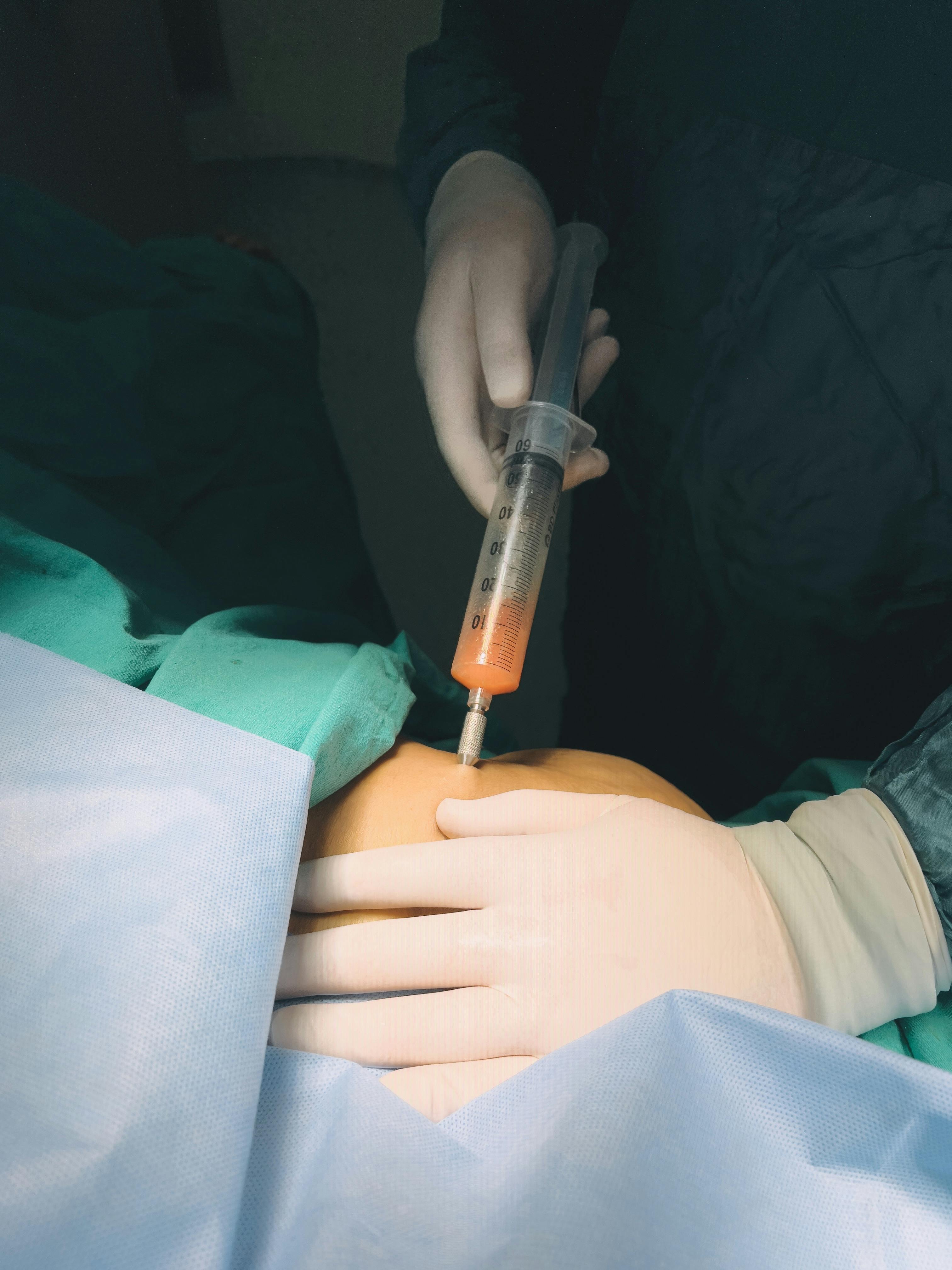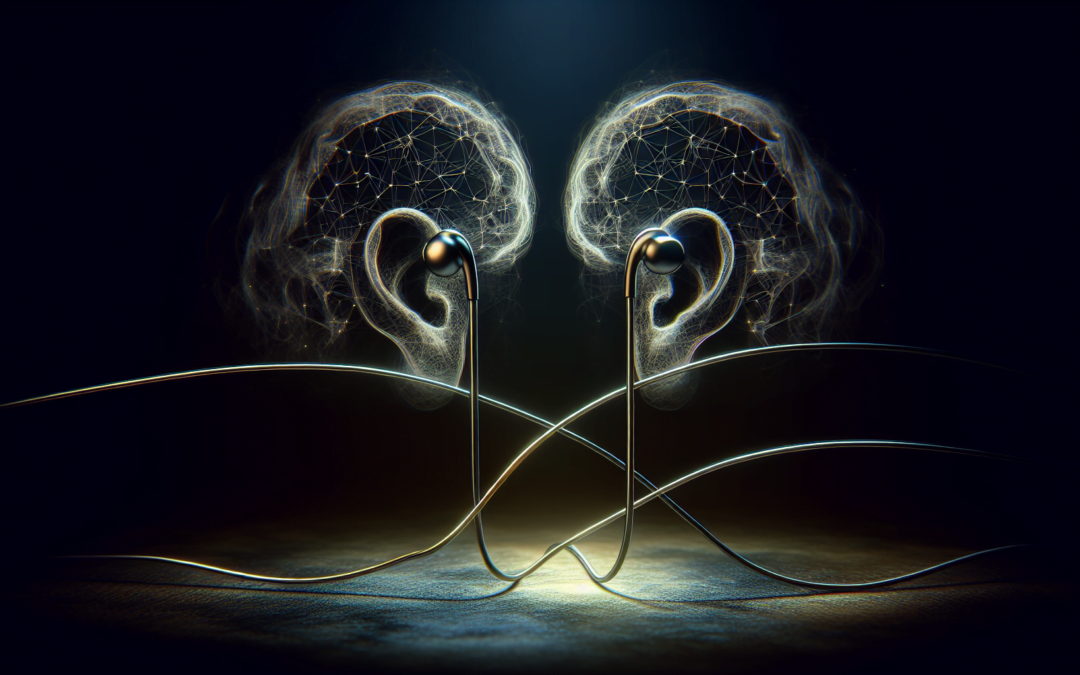Imagine if you could listen to your favorite music, the laughter of your loved ones, and the soothing sound of raindrops hitting the ground. Now, picture a world where all of those precious sounds were suddenly taken away from you. It may seem unimaginable, but for those who experience hearing loss, this is their reality. However, what if I told you that hearing loss could be more than just a natural consequence of aging or exposure to loud noises? Recent research suggests a surprising link between hearing loss and brain tumors, shedding light on a potential connection that could change the way we view these two seemingly unrelated conditions. In this article, we will explore the fascinating connection between hearing loss and brain tumors, providing you with a greater understanding of how these two aspects of health may intersect.

The Basics of Hearing Loss
Definition of hearing loss
Hearing loss refers to a partial or total inability to hear. It can vary in severity and may affect one or both ears. The condition can occur at any age and can be temporary or permanent. People with hearing loss may struggle to hear sounds, conversations, or specific frequencies.
Causes of hearing loss
There are several causes of hearing loss, including genetic factors, exposure to loud noise, certain medications, infections, and aging. Genetic factors can lead to congenital hearing loss, while noise-induced hearing loss can occur from prolonged exposure to loud sounds. Some medications, such as certain antibiotics or chemotherapy drugs, can also cause hearing loss as a side effect. Infections like meningitis or otitis media can damage the auditory system and result in hearing loss. Additionally, as we age, our hearing can naturally deteriorate, leading to age-related hearing loss.
Types of hearing loss
There are three main types of hearing loss: conductive hearing loss, sensorineural hearing loss, and mixed hearing loss. Conductive hearing loss occurs when there is a problem conducting sound waves from the outer or middle ear to the inner ear. This type of hearing loss can often be treated medically or surgically. Sensorineural hearing loss, on the other hand, results from damage to the inner ear or the nerve pathways that transmit sound to the brain. Mixed hearing loss combines elements of both conductive and sensorineural hearing loss.
Prevalence of hearing loss
Hearing loss is a prevalent condition that affects millions of people worldwide. According to the World Health Organization, over 5% of the global population, or approximately 466 million people, have disabling hearing loss. This number is projected to increase significantly in the coming years due to population growth, aging, and exposure to excessive noise. It is crucial to raise awareness about hearing loss and create strategies for prevention and treatment.
Understanding Brain Tumors
Definition of brain tumors
A brain tumor is an abnormal growth of cells in the brain. These tumors can be benign (non-cancerous) or malignant (cancerous). Benign tumors are usually slow-growing and less likely to spread to other parts of the body. Malignant tumors, however, can invade nearby tissues and spread to other areas, making them more dangerous. Brain tumors can affect various parts of the brain and cause a range of symptoms depending on their size and location.
Types of brain tumors
There are several different types of brain tumors, each with its own characteristics and treatment approaches. Some common types include gliomas, meningiomas, pituitary adenomas, medulloblastomas, and metastatic brain tumors. Gliomas originate in the glial cells of the brain and can be either low-grade (slow-growing) or high-grade (fast-growing). Meningiomas develop in the meninges, the protective layers surrounding the brain and spinal cord. Pituitary adenomas form in the pituitary gland, a small gland at the base of the brain that regulates hormone production.
Causes and risk factors for brain tumors
The exact causes of brain tumors are not yet fully understood. However, certain risk factors have been identified, including exposure to ionizing radiation, family history of brain tumors, and certain genetic conditions such as neurofibromatosis and Li-Fraumeni syndrome. Additionally, some studies suggest a possible correlation between cell phone use and the development of brain tumors, although more research is needed in this area. Overall, the majority of brain tumors occur randomly without any identifiable cause or risk factor.
Prevalence of brain tumors
Brain tumors are relatively rare compared to other types of cancer. According to the Central Brain Tumor Registry of the United States, approximately 87,000 new cases of primary brain tumors are diagnosed each year in the country. However, when considering both primary and metastatic brain tumors, the prevalence is higher. Brain tumors can affect individuals of all ages, but certain types, such as medulloblastomas, are more commonly found in children. It is vital to raise awareness about brain tumors and promote early detection and treatment.
The Link Between Hearing Loss and Brain Tumors
Research indicating an association
Recent research has suggested a potential link between hearing loss and brain tumors. Several studies have found a higher prevalence of hearing loss in individuals with brain tumors compared to the general population. While the exact nature of this association is still being investigated, these findings highlight the importance of exploring the potential connection between these two conditions.
Possible mechanisms connecting hearing loss and brain tumors
Several mechanisms have been proposed to explain the potential link between hearing loss and brain tumors. One hypothesis suggests that the development of brain tumors may disrupt the auditory pathway or cause direct damage to the auditory nerves. Another theory suggests that certain genetic factors predispose individuals to both conditions, leading to a higher likelihood of experiencing both hearing loss and brain tumors. However, more research is needed to establish a definitive causal relationship between these two conditions.
Shared risk factors and causes
Hearing loss and brain tumors also share some common risk factors and causes. For example, exposure to loud noise, such as occupational or recreational noise, can increase the risk of both conditions. Genetic factors can also play a role in the development of both hearing loss and brain tumors. Additionally, certain medical conditions or treatments, such as meningitis or radiation therapy, can lead to hearing loss and increase the risk of developing brain tumors. Understanding and addressing these shared risk factors is crucial for prevention and early detection.
Correlation versus causation
It is important to note that while research has indicated an association between hearing loss and brain tumors, the relationship between the two is complex and not yet fully understood. Correlation does not necessarily imply causation, and further research is needed to determine the exact nature of this link. It is possible that other factors, such as treatment modalities or lifestyle behaviors, may contribute to the observed association. Therefore, it is essential to approach the connection between hearing loss and brain tumors with caution and continue to investigate through rigorous scientific studies.
Symptoms of Brain Tumors and Hearing Loss
Common symptoms of brain tumors
The symptoms of brain tumors can vary depending on the size, location, and type of tumor. Common symptoms include persistent headaches, seizures, unexplained nausea or vomiting, difficulty walking or balancing, changes in vision or hearing, confusion, cognitive changes, and personality changes. These symptoms can be gradual or sudden, and they may worsen over time. It is important to be aware of these potential signs and seek medical attention if they persist or become more severe.
Characteristic symptoms of hearing loss
Hearing loss can present with various symptoms, depending on the type and severity of the condition. Common signs of hearing loss include difficulty understanding speech, asking others to repeat themselves, turning up the volume on electronic devices, feeling like others are mumbling, and withdrawal from social situations due to communication difficulties. In some cases, individuals may experience tinnitus, a ringing or buzzing sound in the ears. If you notice any of these symptoms, it is advisable to consult with a healthcare professional or audiologist for further evaluation.
Overlap in symptoms
Interestingly, there is some overlap in the symptoms of brain tumors and hearing loss. Both conditions can cause changes in hearing and may lead to difficulty understanding speech. Additionally, brain tumors can potentially affect the auditory nerves or regions of the brain that process sound, resulting in hearing loss or related symptoms. It is essential to consider these shared symptoms when evaluating individuals with suspected brain tumors or hearing loss to ensure a comprehensive and accurate diagnosis.

Diagnosing Brain Tumors and Hearing Loss
Medical tests and examinations for brain tumor diagnosis
Diagnosing a brain tumor typically involves a combination of medical tests and examinations. These may include a neurological examination to assess reflexes, strength, and coordination, as well as imaging tests such as magnetic resonance imaging (MRI) or computed tomography (CT) scans to visualize the brain and identify any abnormalities. In some cases, a biopsy may be necessary to confirm the diagnosis and determine the type of tumor. Prompt diagnosis is crucial for initiating appropriate treatment and improving outcomes.
Audiological assessments for hearing loss diagnosis
Audiological assessments are used to diagnose and evaluate hearing loss. These tests typically include pure-tone audiometry, which measures the individual’s hearing thresholds at different frequencies, and speech audiometry, which assesses the person’s ability to understand speech. Additional tests, such as tympanometry, can evaluate the middle ear’s function, while otoacoustic emissions (OAE) testing can assess the functionality of the inner ear. These assessments help determine the type, severity, and configuration of hearing loss, guiding the development of appropriate treatment strategies.
Co-diagnosis and integrated approach
Given the potential link between hearing loss and brain tumors, it is essential for healthcare professionals to recognize and address both conditions when making diagnoses. A collaborative and interdisciplinary approach involving neurologists, otolaryngologists, audiologists, and other relevant specialists can ensure comprehensive evaluation and appropriate management. Co-diagnosing hearing loss and brain tumors allows for a more integrated treatment plan and improved outcomes for patients who may be experiencing these concomitant conditions.
Treatment Options for Brain Tumors and Hearing Loss
Surgical interventions for brain tumors
Surgical intervention is a common treatment option for brain tumors, particularly for those that are accessible and can be safely removed. The goal of surgery is to remove as much of the tumor as possible while minimizing damage to healthy brain tissue. Craniotomy, the surgical removal of part of the skull, is often performed to access the tumor. Depending on the tumor’s size, type, and location, other surgical techniques, such as stereotactic radiosurgery or endoscopy, may be employed. Surgery may be performed alone or in combination with other treatments, depending on the specific case.
Radiation therapy for brain tumors
Radiation therapy involves the use of high-energy beams to target and destroy cancer cells. It is often employed for brain tumors that are difficult to remove surgically or as an adjunctive treatment following surgery. External beam radiation therapy is the most common approach, where radiation is delivered precisely to the tumor site from an external machine. Proton therapy, a more precise form of radiation therapy, can also be utilized for certain brain tumors. Radiation therapy aims to shrink or eliminate tumors while preserving healthy brain tissue.
Chemotherapy for brain tumors
Chemotherapy uses powerful drugs to kill or slow down the growth of cancer cells. It is commonly used for brain tumors that have spread to other parts of the body (metastatic tumors) or for recurrent tumors. Chemotherapy can be administered orally or intravenously, depending on the specific drugs used. The choice of chemotherapy regimen depends on various factors, including the tumor type, stage, and the patient’s overall health. While chemotherapy can be effective in controlling tumor growth, it often comes with various side effects that need to be carefully managed.
Hearing aids and assistive devices for hearing loss
For individuals with hearing loss, hearing aids are often the primary treatment option. Hearing aids are small electronic devices worn behind or inside the ear that amplify sound, making it easier to hear. They can be programmed to suit the individual’s specific hearing needs and can help improve communication and overall quality of life. Additionally, assistive devices such as personal amplifiers, FM systems, and captioned telephones may be used to enhance hearing in specific situations, such as noisy environments or during phone conversations.
Cochlear implants and other surgical options
In cases of severe to profound sensorineural hearing loss where hearing aids are not effective, cochlear implants may be recommended. A cochlear implant is a surgically implanted device that bypasses damaged parts of the inner ear and directly stimulates the auditory nerve. This allows individuals with severe hearing loss to perceive sound signals and regain some level of auditory function. Other surgical options, such as bone-anchored hearing systems or middle ear implants, may be considered for certain types of hearing loss. The choice of treatment depends on the individual’s specific needs and the underlying cause of their hearing loss.
Considerations for integrated treatment
When managing individuals with both brain tumors and hearing loss, an integrated treatment approach is essential. This approach involves close collaboration between the medical and audiological teams to ensure that the treatment plans for each condition are compatible and minimize potential adverse effects. It is crucial to consider the individual’s overall health, specific tumor characteristics, and audiological needs when developing the treatment strategy. Integrated treatment can help optimize outcomes and improve the individual’s overall well-being and quality of life.

Recovery and Rehabilitation
Recovery process after brain tumor treatment
The recovery process after brain tumor treatment can vary depending on the individual, the type of tumor, and the treatment modalities used. It is common for individuals to experience physical and cognitive challenges following surgery, radiation therapy, or chemotherapy. These challenges may include fatigue, difficulty with memory and concentration, motor deficits, and emotional changes. The recovery process often involves a combination of medical care, rehabilitation, and psychosocial support to help the individual regain function and adapt to any changes caused by the tumor and its treatment.
Rehabilitation programs for brain tumor survivors
Rehabilitation plays a crucial role in the recovery process for brain tumor survivors. Rehabilitation programs are tailored to the individual’s specific needs and may include physical therapy to improve motor function and balance, occupational therapy to regain daily living skills, and speech therapy to address any communication or swallowing difficulties. Additionally, cognitive rehabilitation can help individuals with memory, attention, and problem-solving skills. These programs aim to maximize the individual’s functional independence and quality of life after treatment.
Hearing rehabilitation approaches
For individuals with hearing loss, hearing rehabilitation is an important aspect of recovery. Hearing rehabilitation can include the fitting and adjustment of hearing aids or cochlear implants to ensure optimal hearing function. Audiologists may also provide counseling and education on communication strategies, lip reading, or sign language if necessary. Additionally, auditory training programs can help individuals retrain their brain to better process and understand sounds. The goal of hearing rehabilitation is to optimize the individual’s hearing capabilities, promote effective communication, and enhance overall well-being.
Psychosocial support and counseling
Psychosocial support and counseling are essential components of the recovery and rehabilitation process for individuals with brain tumors and hearing loss. Coping with the diagnosis, treatment, and potential side effects can be emotionally challenging. Psychosocial support can provide individuals and their families with a safe space to express their feelings, address concerns, and learn coping strategies. Counseling services may include individual therapy, support groups, and educational resources to help individuals navigate through the emotional and psychological aspects of their journey.
Prevention and Risk Reduction
Lifestyle modifications for reducing the risk of brain tumors
While the causes of brain tumors are not fully understood, certain lifestyle modifications can potentially reduce the risk. Avoiding exposure to ionizing radiation, such as excessive medical imaging or unnecessary radiation therapies, can help mitigate the risk. Additionally, protecting the head from trauma by wearing appropriate safety equipment during high-risk activities is crucial. Maintaining a healthy lifestyle, including regular exercise, a balanced diet, and adequate sleep, may also play a role in reducing the risk of certain cancerous conditions, including brain tumors.
Taking steps to prevent hearing loss
Preventing hearing loss involves adopting behaviors that protect the ears from potential damage. Limiting exposure to loud noises is crucial, whether through the use of ear protection, maintaining a safe listening volume, or taking breaks from noisy environments. Avoiding the use of cotton swabs or other objects in the ear can also help prevent damage to the delicate structures of the ear. Regular monitoring of hearing health through screenings and check-ups can aid in the early detection and prevention of hearing loss.
Protecting the brain and ears from potential harm
Considering the potential link between hearing loss and brain tumors, protecting both the brain and ears from potential harm is essential. This can involve wearing protective headgear during activities that carry a risk of head injury, such as contact sports or cycling. Additionally, practicing safe listening habits by keeping the volume at a reasonable level when using headphones or attending concerts can reduce the risk of noise-induced hearing loss. Taking steps to maintain overall health and well-being, including managing chronic conditions and avoiding exposure to known carcinogens, can also contribute to overall brain and hearing health.
Future Research and Advances
Ongoing studies investigating the relationship between hearing loss and brain tumors
As the understanding of the link between hearing loss and brain tumors evolves, ongoing research is being conducted to further investigate this relationship. Numerous studies are exploring the mechanisms underlying this association, potential shared genetic factors, and the impact of different treatment modalities. Large-scale cohort studies and interdisciplinary collaborations are crucial in advancing our knowledge and potentially uncovering new strategies for prevention, early detection, and treatment.
Technological advancements in early detection
Technological advancements play a significant role in early detection and improved outcomes for both hearing loss and brain tumors. Imaging technologies such as MRI and CT scans continue to advance, allowing for more detailed visualization and early detection of brain tumors. Additionally, developments in molecular biology and genetic testing are enhancing our understanding of the genetic factors involved in both conditions. With continued advancements and innovations, early detection rates are expected to improve, leading to better treatment outcomes and increased survival rates.
Innovative treatment options
The field of oncology and audiology continues to explore innovative treatment options for brain tumors and hearing loss. Targeted therapies, such as immunotherapy and gene therapy, are being investigated for their potential in treating specific types of brain tumors. These therapies aim to selectively target cancer cells while sparing healthy tissue, reducing side effects and improving treatment effectiveness. In the field of audiology, advancements in hearing aid technology, such as cochlear implants with improved speech recognition capabilities, are enhancing outcomes for individuals with hearing loss. As research progresses, these innovative treatment options have the potential to revolutionize the way brain tumors and hearing loss are managed.
Conclusion
In conclusion, understanding the link between hearing loss and brain tumors is a complex and evolving area of research. While there is evidence suggesting an association between the two conditions, further studies are needed to establish the precise nature of this relationship and determine potential shared mechanisms and risk factors. Recognizing the overlapping symptoms and considering the possibility of co-occurrence is crucial for accurate diagnosis and appropriate management. The interdisciplinary collaboration between medical professionals, audiologists, and researchers is vital in advancing our understanding of these conditions and improving patient outcomes. By raising awareness, promoting prevention strategies, and supporting ongoing research, we can strive towards a future with better prevention, detection, and treatment options for both hearing loss and brain tumors.
